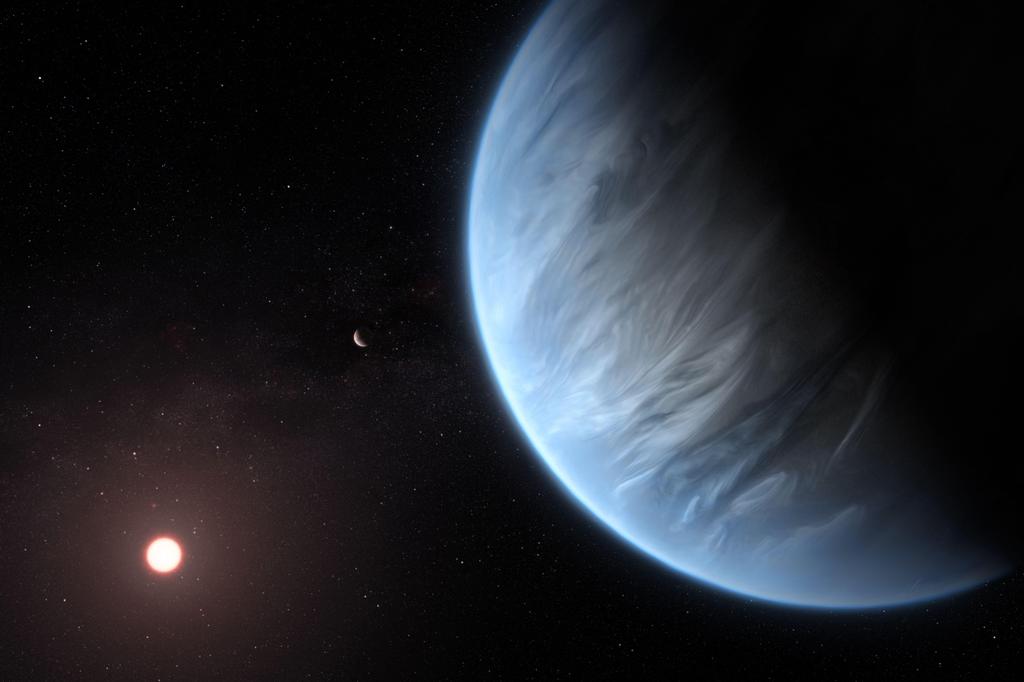Exoplanet K2-18b: A Potential New Home for Life?
The search for extraterrestrial life has captivated humanity for centuries. While we haven't made contact yet, recent discoveries are bringing us closer to answering the age-old question: Are we alone? One particularly exciting exoplanet, K2-18b, is generating significant buzz amongst astrobiologists and sparking renewed hope in the possibility of life beyond Earth. This super-Earth, orbiting a red dwarf star, possesses characteristics that make it a compelling candidate for harboring life as we know it – and perhaps even life as we don't know it.
K2-18b: Key Characteristics and Discoveries
K2-18b, located approximately 110 light-years away in the constellation Leo, was initially discovered in 2015 by NASA's Kepler space telescope. However, it wasn't until 2019 that researchers using data from the Hubble Space Telescope made a groundbreaking discovery: the presence of water vapor in its atmosphere. This discovery immediately propelled K2-18b to the forefront of exoplanet research.
What Makes K2-18b Unique?
- Location within the Habitable Zone: K2-18b orbits its star within the habitable zone, also known as the Goldilocks zone – the region around a star where the temperature is just right for liquid water to exist on a planet's surface. Liquid water is considered essential for life as we know it.
- Water Vapor in the Atmosphere: The detection of water vapor, although not conclusive proof of liquid water on the surface, significantly increases the possibility of its presence. Further research is needed to determine the abundance and location of this water.
- Super-Earth Classification: K2-18b is classified as a super-Earth, meaning it's larger and more massive than Earth but smaller than Neptune. The exact composition of its interior remains unknown, but its size suggests it could have a rocky surface.
- Potential for a Thick Atmosphere: While the exact atmospheric composition is still under investigation, the presence of water vapor hints at the possibility of a thicker, more complex atmosphere, offering protection from harmful radiation.
Challenges and Future Research
Despite the exciting potential, several challenges remain in assessing K2-18b's habitability:
Unanswered Questions:
- Atmospheric Pressure and Composition: While water vapor has been detected, a comprehensive understanding of the atmospheric pressure and the presence of other gases like methane or oxygen is crucial to evaluating habitability.
- Surface Conditions: The presence of liquid water on the surface, and its potential depth and distribution, remains unknown. Is K2-18b a water world, a planet with vast oceans, or something else entirely?
- Stellar Activity: Red dwarf stars, like the one K2-18b orbits, are known for frequent and intense stellar flares that could potentially strip away a planet's atmosphere and make it inhospitable to life.
Future missions and telescopes, such as the James Webb Space Telescope (JWST), are expected to provide crucial data to address these questions. JWST's advanced capabilities will allow for a more detailed analysis of K2-18b's atmosphere, potentially revealing the presence of biosignatures – indicators of life.
The Implications of Discovering Life on K2-18b
The discovery of life on K2-18b, even microbial life, would have profound implications for our understanding of the universe and our place within it. It would demonstrate that life can emerge and thrive in environments vastly different from Earth's, expanding the possibilities for life's existence elsewhere in the cosmos. This discovery would fundamentally reshape our scientific understanding and philosophical perspectives.
Conclusion: The Search Continues
K2-18b represents a significant step forward in the search for extraterrestrial life. While we still have much to learn, the presence of water vapor in its atmosphere offers a tantalizing glimpse of the potential for life beyond Earth. The ongoing research and future observations using advanced technologies like JWST promise to reveal more about this fascinating exoplanet and potentially answer one of humanity's most fundamental questions. Stay tuned for further updates in this exciting field!
Keywords: K2-18b, exoplanet, habitable zone, super-Earth, water vapor, extraterrestrial life, biosignatures, James Webb Space Telescope (JWST), NASA, Kepler space telescope, red dwarf star, astrobiology, space exploration.
